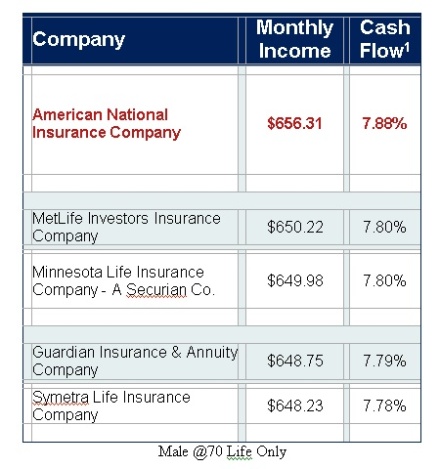Thought for the day:
I always wanted to be somebody, but now I realize I should have been more specific.
Lily Tomlin
If you will read no further:
Too bad because you will miss a very profound message. But OK. At least take a moment soon to go to www.westlandinc.com and view our new website launched just a few days ago. It is designed for simplicity and functionality. Forms, information, proposal requests and access to information from our major carriers; all easily accessed in an attractive new package at www.westlandinc.com.
Thought for the week:
When compared to other investment options for liquid assets for medical emergencies the creation of a large asset from small deposits (life insurance) is a most desirable alternative.
Those who say that life insurance is a bad investment are not relating to real life.
Since everyone dies, we know exactly what the end result of a life insurance program is going to be. Because we don’t know when any individual will die, we don’t know how efficient the program will be.
• Walt purchased a $1million life insurance policy at the age of 47 and died from a brain tumor at age 53. Anyone disagree that (no matter what Walt paid for it) he made a good investment buying that policy…an IRR of about 92% per year?
• Sharon purchased the same kind of policy at the age of 63 and died at the age of 93. After 30 years of paying premiums….an IRR of about 4.5% per year. Should have put her money in a mutual fund. Who knew?
When you sell life insurance for a living you must concentrate on the “need”. That is what all the critics of insurance focus on. How expensive is it, and do you really “neeeed” it? You will sell only to those clients to whom you can effectively point out that the individuals untimely death will leave a significant deficiency in the financial condition of those he/she leaves behind. Then you must be convincing, and good at motivating them to take action to “purchase” the policy so the money will be there “in case” they die.
On the other hand, if you are a financial planner or investment advisor you can clearly see the value in your clients’ portfolio and to their family of having a portion of their assets “invested” in a life insurance policy. And the way you can tell if it is a good value is to know when the insured will die and then you can calculate the rate of return. In most cases the tax free rate of return is about 4.5% if one dies at age 93 and much greater (8.5%/yr.) if you are lucky enough to die at 85 and EVEN GREATER (24%/yr.) if you are EVEN LUCKIER and die at 75…..well, hopefully you get my point.
Now consider the risks of Critical, and Chronic Illness that (in many cases) occur before death. Just think of the rate of return on your money if you are lucky enough to have a heart attack or kidney failure or need a lung transplant after only 10 or 15 years of owning and paying for that policy. That is assuming your advisor was wise enough to make sure the insurance you were “investing in” contained an acceleration rider to access a portion of the death benefit while you are still alive and need some big bucks to cover the cost of that lung transplant.
Westland Financial affiliated advisors are just such advisors because they are constantly being informed of the value of committing a portion of their clients’ portfolio to an insurance policy that creates large assets just at the time it is needed, no matter when that may be. And yet….if it is never needed, the heirs will think of them as a hero for doing such a good job of protecting the portfolio from life’s many occurrences that could have befallen their folks and maybe caused great damage to their portfolio just when it was about to make great gains in the upcoming bull market.
The End
Watch this short video on Critical Illness



